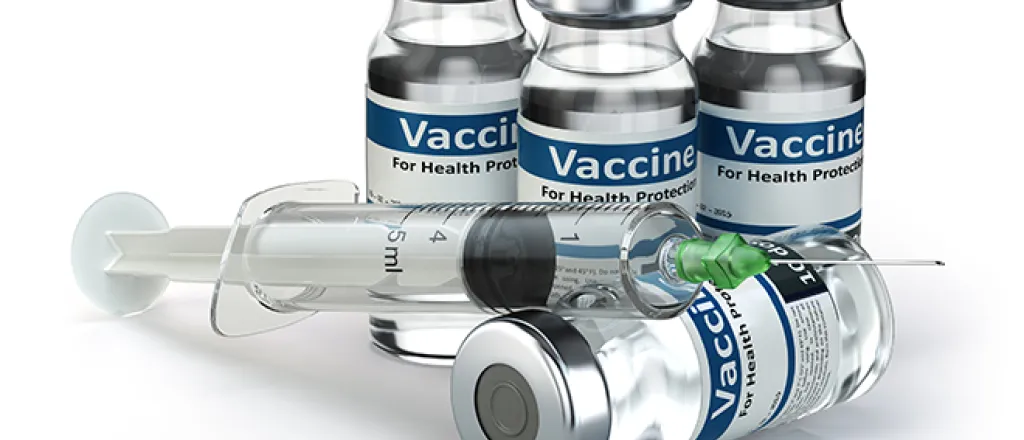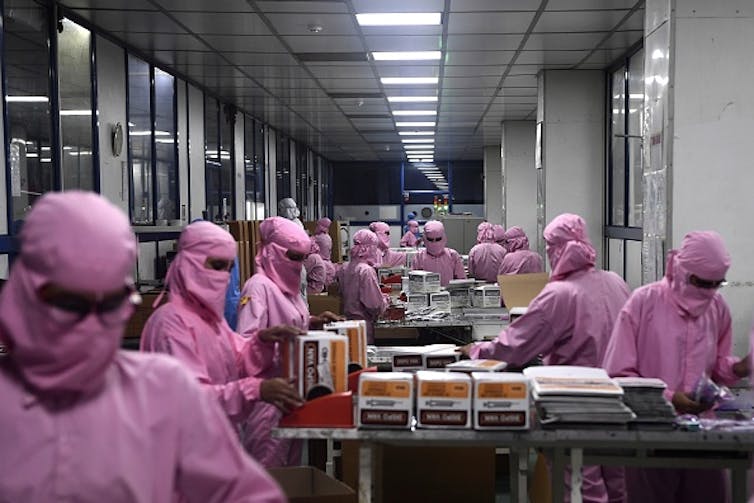
South African case study sheds light on how vaccine manufacturing can be developed

David Richard Walwyn, University of Pretoria and Padmashree Gehl Sampath, Harvard University
The uneven availability of COVID-19 vaccines has become an increasingly urgent and vexatious issue. But managing the problem of what’s been labelled “vaccine nationalism” is proving a hard nut to crack.
Shortages of medicines and vulnerable supply chains for critical medicines are issues for nearly all developing countries. In Africa, in particular, there’s limited manufacturing capacity. Over 20 countries don’t have any capacity at all. And many regions continue to import at least 95% of their pharmaceutical requirements.
Understanding why this is the case is key. After all, there is ample evidence that governments can be effective economic actors. This includes being able to exercise large influence on the manufacturing sector. They can, for example, build capacity through incentives, regulation and policy. Experiences from other countries show that public investment and public procurement in the domestic pharmaceutical sector can create capacity and markets.
So why hasn’t this happened on the continent?
Typically, these products are technology and capital intensive. They require highly skilled personnel and reliable supply chains for key raw materials and specialised equipment. And the initial investment in people and infrastructure necessitates long term stable markets with sufficient volume to justify the risk.
The absence of this security, even in the continent’s larger markets, such as South Africa, Nigeria and Egypt, limits expansion of this critical sector.
We conducted a study to understand the extent to which gaps in the availability of financing were constraining the development of manufacturing capacity for vaccines and other health equipment. Our findings show how governments, firms and donor agencies should align their efforts to support diagnostics, vaccines and therapies as a critical resource.
We identify a number of approaches that should be explored. These include joint plans for regional production hubs, pooled procurement, direct grants, periods of market exclusivity, international technology transfer and redirecting of international development aid.
Investigation
As part of the study, we looked at two case studies in South Africa: Ketlaphela Pharmaceuticals and the Biovac Institute.
Ketlaphela is a state owned company. It was created to manufacture active pharmaceutical ingredients and medical products mainly for communicable diseases such as HIV/AIDS, TB and malaria. It has yet to produce any pharmaceuticals.
Biovac is public-private partnership between the South African government and a consortium of healthcare companies. Its capacity is small compared to the COVID-19 vaccine market. Nevertheless it holds three important lessons on how a country like South Africa can go about building this kind of capacity.
Read more: Vaccine production in South Africa: how an industry in its infancy can be developed
Firstly, it provided long term market security. This was done through an effective 15-year contract with the National Department of Health. Second, it allowed Biovac to receive a price premium as a means of funding the company’s re-investment in vaccine manufacturing. And, lastly, it supported the establishment of a strong research and development capability.
To understand how these experiences checked out with the broader realities of pharmaceutical production across Africa, we mapped funding flows for pharmaceutical projects on the continent. We also interviewed stakeholders, including civil society advocacy groups and industry experts. And we talked to diagnostics, vaccines and therapies manufacturers across the continent to understand the on-the-ground realities.
Barriers
Conditions for the financing of diagnostics, vaccines and therapies manufacturing across Africa are clearly very diverse. Some countries have liquid financial markets, readily available foreign exchange and sophisticated financial systems. Others face real constraints in terms of access to capital and foreign exchange.
Similarly, we found that smaller producers faced different challenges to larger established producers.
Nevertheless, we did find some commonalities.
Companies reported clear discrepancies between political aspirations to reduce import dependency in healthcare, and day-to-day realities. In particular, businesses complained about factors that increased their cost of capital and made them less competitive. These were related to systemic or infrastructure failures that they had little control over. They included:
high electricity costs and unreliable supply,
lack of clean water,
port delays,
weak infrastructure, and
the limited availability of skilled personnel.
Our interviews confirmed that these additional costs made it harder for local companies to break even and recover working capital in highly competitive markets.
As a result, firms often retreated into narrower product categories. Or they closed, unable to compete without greater government support against Indian and Chinese companies.
Some answers
The study highlighted two critical areas as being fundamental in reforming the public support structures in favour of local companies.
In the first place, governments must use public procurement. They can do so by providing longer term supply contracts with strong offtake guarantees (take-or-pay).
Secondly, donor agencies need to review their procurement strategies and reconsider them in favour of local manufactures. These are presently based on accredited low-cost facilities, mainly in India and China.
This is more easily said than done. Nevertheless, the essential take home from the interviews was that when local firms could produce good quality products, they needed to be able to access markets without being ‘crowded out’ by larger companies that had economies of scale and scope. This could help create a wider range of suppliers from developing countries in the long run.
The role of international financing agencies is critical in building local resilience to global health emergencies. For instance, the Global Fund is responsible for financing and procuring 21% of the drugs for the treatment of HIV. Similar figures are reported for TB and malaria.
Similarly, one of the objectives of Gavi’s Strategy for 2021-2026 (GAVI 5.0) is to shape healthy markets for vaccine products. This could be reviewed against these realities, especially given the supply constraints faced by the COVAX facility.
These agencies have the market power to diversify sources of supply without undermining the cost of public health services. The entities could work with national governments to build local capacity and increase resilience.
Unlocking financial support
Interestingly, the mapping of funding flows showed that there is investment capital available in global financial markets. This includes capital for African diagnostics, vaccines and therapies investment.
To the extent there are constraints on financing for manufacturing, this is not because of a global shortage of available capital. Institutions such as the World Bank, the International Finance Corporation and the African Development Bank have announced large commitments to support responses to COVID-19. Unfortunately, this funding has not yet been allocated to projects for African pharmaceutical manufacturing.
Likewise, foundations are financing research and development, advance purchase commitments of vaccines and diagnostics, and other efforts to address COVID-19. But they too have not materially funded projects to produce in Africa.
Given the devastating impact of the pandemic on the continent’s economies, international institutions and governments must work together to bring pharmaceutical manufacturing to African countries.![]()
David Richard Walwyn, Professor of Technology Management, University of Pretoria and Padmashree Gehl Sampath, Fellow, and Senior Advisor, Global Access in Action Program, Berkman Klein Center, Harvard University
This article is republished from The Conversation under a Creative Commons license. Read the original article.
















